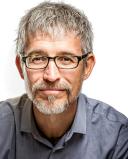Creativity
Creativity Is Not About Amateurs or Academies
There’s tension about the culture of creativity.
Posted November 30, 2015

There’s a tension, worldwide, about the culture of creativity.
In one corner, you have people like Andrew Keen arguing that the "Cult of Amateurs" online—DIY bloggers, artists, videographers, writers—is destroying our values and culture. Keen is a renown skeptic of the Internet, executive director of the Silicon Valley FutureCast, and author of both The Cult of the Amateur and the more recent The Internet Is Not the Answer. His argument, especially in his first book, is that the Internet's promise to unleash our creativity has resulted in the production of lots of amateur rubbish:
But our cultural standards and moral values are not all that are at stake. Most gravely, the very traditional institutions that helped foster and create our news, music, literature, television shows, and movies are under assault as well.
Let’s call this corner of thinkers the Big Idea School of Creativity. This view champions the Artist who commits often obsessively to Art with a capital “A.” The aim is to elevate Art itself. Such artists are continually in conversation, often with other artists, novelists, and dancers who share common cultural concerns and interests about humanity, the world of ideas, and the world of aesthetics.
They see the media of art as vehicles to explore deeper questions about what makes us human or other questions related to larger themes of humanity.
Creativity, then, is the activity of making something new and useful within a given social or aesthetic tradition. There is continuity. The artist does not live in an atomized vacuum.
They favor talent, work, field-specific success and innovation, prestige, reputation.
In another corner, you have people like Elizabeth Gilbert, championing for all of us to unleash our creativity.
Let’s call this view the Populist School of Creativity.
This view champions the person who dares to express herself through a media she always wanted to since she was a child but was afraid to. The aim is to free up any person who is willing. They are in conversation with anyone with an itch to explore and create.
They favor play, whim, and personal expression. They generally bristle at critique or craft knowledge as relics of the Big Idea School. They often see institutions and academies, schools and businesses—in short, anything smacking of authority or organization—as the squashers of their innate right to create.
Yes, a right. If the Big Idea School sees creativity as the natural outgrowth of obsessive work, the Populist School views creativity as a right for all.
There is little continuity, but there is increasing community. If the Big Idea School is viewed as a wee bit exclusive, the Populist School is viewed as ultra-inclusive.
Incidentally, psychologists also traditionally divide studies of creativity along two lines: Big-"C" Creativity and little-"c" creativity. Big-C Creativity studies focus on people who excel within traditional fields of the arts—composers, writers, artists, dancers.
Yet, might such dualities be limited?
We Have Big Problems
Here’s what I suggest—a middle way. It’s not enough to stay in the academy and ignore the very real, possible applications of building several human beings’ capacity to make things, to imagine their way through real solutions, to learn to trust their innate capacity to observe and make real ideas in traditional and new forms.
We have big problems causing big divides. We have a global class divide that is becoming canyon-wide and deep. We have people resurrecting primal fears and prejudices and hatreds. Many people’s response seems to be, “Get on the rich team via the Internet or else be left in the dust.”
The Artist, in the conventional sense, ultimately seeks inclusion within a very exclusive set of conventions, organizations, and institutions, which approve, rate, and fund the Artist. Or not. You're either chosen and brought in and funded, or not. You either get "sold" to your medium's respective institution, or you remain a bohemian juggler.
But the free-for-all Populist School has its limitations, too. Increasingly spending our hours behind screens may indeed make us, as a people, more myopic. Literally. And it also might limit the focus of our lens solely on personal growth.
Creativity as self-expression has been challenged for centuries. Thirty years ago, I proposed that writing and other forms of creativity could be vehicles not only for self-expression but also more for self-expansion—something you make that is more than you. Craft knowledge builds upon and expands self-knowledge. Craft knowledge does not deaden but deepens wonder.
Creativity need not simply be a mechanism to further academies, institutions, or reputations. It also need not simply be a vehicle for personal self-expression.
Creativity is an opportunity to bring forth each individual's talents, build their skills, and challenge their best wits and talents so they can make new things or experiences, find new solutions and explore ideas that reach beyond serving only one's own interests or expressing one's own personality—or solely perpetuating one's reputation and career track. Creativity at its best, in my view, whether Big or Small, changes the way we think, feel, view, act. It demands we pay attention to this one astonishing life and not squander its beauty or ignore its horror.
The human creative urge is biological as much as it is spiritual. It arises from one of humankind's more remarkable traits—self-awareness and meta-awareness. The awareness of one’s self and awareness of one’s own mind at work and play gives rise to this natural need to make something new, whether that something is a device, toy, idea, project, business, charity, strategy, or sculpture.
Your capacity to see yourself and to see your mind like the mind’s mirror is at the core of the creative urge.
That urge within you is reflected in how the pond mirrors the sky. It’s reflected in a building mirroring a tree. It’s reflected in a cloud mirroring an eye. It’s reflected in you mirroring me.
We can live without acting on that urge, but we cannot thrive without acting on that urge.
On one hand, if we confine our urge within an academy solely of old guard reputations and rules, many of us will perish because we know that this urge means more than competition and pettiness in clamoring for awards and pieces of very, very small pies.
On the other hand, if we forsake our urge to hobbyist self-expression, we lose the opportunity to be part of something greater and more fulfilling in these trying times.
Proposing The Creative Bridge
What if instead of creating divisions, we built bridges? What if we created new frameworks more conducive to the early-21st century's radical shifts in economy, education, entrepreneurship, psychology, and the arts?
I have three recommendations:
#1 - Be Skeptical Yet Open to the Digital Promised Land.
Keen's caveats merit attention. So do Jaron Lanier's caveats - You Are Not a Gadget. Really, you're not. And so do Douglas Rushkoff's warnings - Program or Be Programmed. Interesting observation: Keen, Lanier (essentially one of the early inventors of what we call 'virtual reality'), and Rushkoff were each early optimistic champions of the Internet's promises to revolutionize our culture and economy for the greater good instead of the greater divide.
But William Deresiewicz (former Yale professor and author of Excellent Sheep:The Miseducation of the American Elite and the Way to a Meaningful Life) also argues that our times are calling for The Death of the Artist (which has been dead for about a century) and the Rise of the Creative Entrepreneur.
You're foolish, in my view, to stew alone in your studio claiming that the whole digital world is full of frauds (Have you read Salman Rushdie's Twitter feed?), but you also might be naive to swallow the Digital World pill without caution.
We're not binary creatures. It doesn't have to be either/or. Be skeptical and be open to what is possible. Handle those possibilities your way and with integrity and artfulness.
#2 - Cross the Amateur Threshold and Fill the Apprenticeship Gap.
I agree with Keen that the digital DIY mindset potentially diminishes how we experience being human, but with its wide-open opportunities I see it as our responsibility to create ways to produce 21st-century forms of mentorship.
I have argued that there is an Apprenticeship Gap, sometimes perpetuated by false expectations and fantasies about what it means to be an artist or a business artist. This gap, though, is also caused by a dearth of responsibility, whether among employers and business leaders in the fields of business and entrepreneurship or among established artists, professors, and more. Online education and online programs hold promise, but only if their creators hold high standards for educational design and transformational pedagogy—learning experiences that not only hone craft within a field but also change character, outlook, and action.
We need established scientists and experts willing to broaden their reach to audiences outside of the academy via digital means and live events while still being true to the rigors of academia. I think of colleagues in psychology and creativity such as Todd Kashdan, Scott Barry Kaufman, Dacher Keltner and in engineering and entrepreneurship and creativity such as Tina Seelig.
We need established artists but utterly naive festival organizers, like Joe Concra, bold enough to imagine possibilities with a dentist on how to bring free health care to artists who provide free art and music while building up a community (The O+ Festival, originating in Kingston, New York, has now been duplicated in Detroit and other cities.).
We need audacious, wide-eyed amateurs to test out bold experiments and to challenge the way things have been done.
We need digital natives who can execute and broadcast powerful art in a fraction of the time it might take someone of my generation.
But we also need people with slower, deeper processors who might have more courage and wisdom to raise questions at the right junctures. We need Baby Boomers like leadership expert and Thin Difference Founder Jon Mertz willing to learn from and lead Millennials.
#3 - Cross the Business & Art Divide.
During the 20th century in the United States, the Artist flourished from business benefactors, collectors, and institutional positions and grants. Business leaders collected art. They did not "do" art.
Our global economy and the United States economy has shifted radically from the 20 years ago. So has the work place. In 1995, approximately 93% of the U.S. workforce worked under traditional HR. Now an estimated 42% of Americans do not work for another business or institution. By 2020, that number likely will reach 50%.
Such a situation demands that everyone, from freelancers to business leaders to creatives, become more savvy and versatile. It also demands they learn from each other.
Yes, creatives must learn how to develop revenue and flexible business models so they can continue to create, perpetuate, and distribute their work.
But business leaders need to learn from artists, or at least steep themselves in areas that most artists take for granted, which are becoming more and more requisite amid shifting work forces and changing customer demands—skill sets such as creative intelligence, social intelligence, and emotional intelligence to make optimal work places and build loving teams.
With these skills, they can become savvy to the features more and more people demand from businesses big and small—integrity and elevating experiences.




